
Diversified industrial manufacturing company Worthington (NYSE:WOR) reported Q3 CY2025 results topping the market’s revenue expectations, with sales up 18% year on year to $303.7 million. Its non-GAAP profit of $0.74 per share was 5.4% above analysts’ consensus estimates.
Is now the time to buy Worthington? Find out by accessing our full research report, it’s free.
Worthington (WOR) Q3 CY2025 Highlights:
- Revenue: $303.7 million vs analyst estimates of $299.4 million (18% year-on-year growth, 1.4% beat)
- Adjusted EPS: $0.74 vs analyst estimates of $0.70 (5.4% beat)
- Adjusted EBITDA: $65.06 million vs analyst estimates of $61.2 million (21.4% margin, 6.3% beat)
- Operating Margin: 3%, up from -1.8% in the same quarter last year
- Free Cash Flow Margin: 9.2%, down from 12.2% in the same quarter last year
- Acquired Elgen Manufacturing, "a market-leading designer and manufacturer of HVAC parts and components, ductwork and structural framing primarily used in commercial buildings throughout North America, on June 18, 2025, for $91.2 million"
- Market Capitalization: $3.04 billion
“We started the fiscal year with solid momentum led by strong performance in our Building Products segment,” said Worthington Enterprises President and CEO Joe Hayek.
Company Overview
Founded by a steel salesman, Worthington (NYSE:WOR) specializes in steel processing, pressure cylinders, and engineered cabs for commercial markets.
Revenue Growth
Reviewing a company’s long-term sales performance reveals insights into its quality. Any business can put up a good quarter or two, but the best consistently grow over the long haul. Worthington struggled to consistently generate demand over the last five years as its sales dropped at a 16.2% annual rate. This was below our standards and suggests it’s a low quality business.
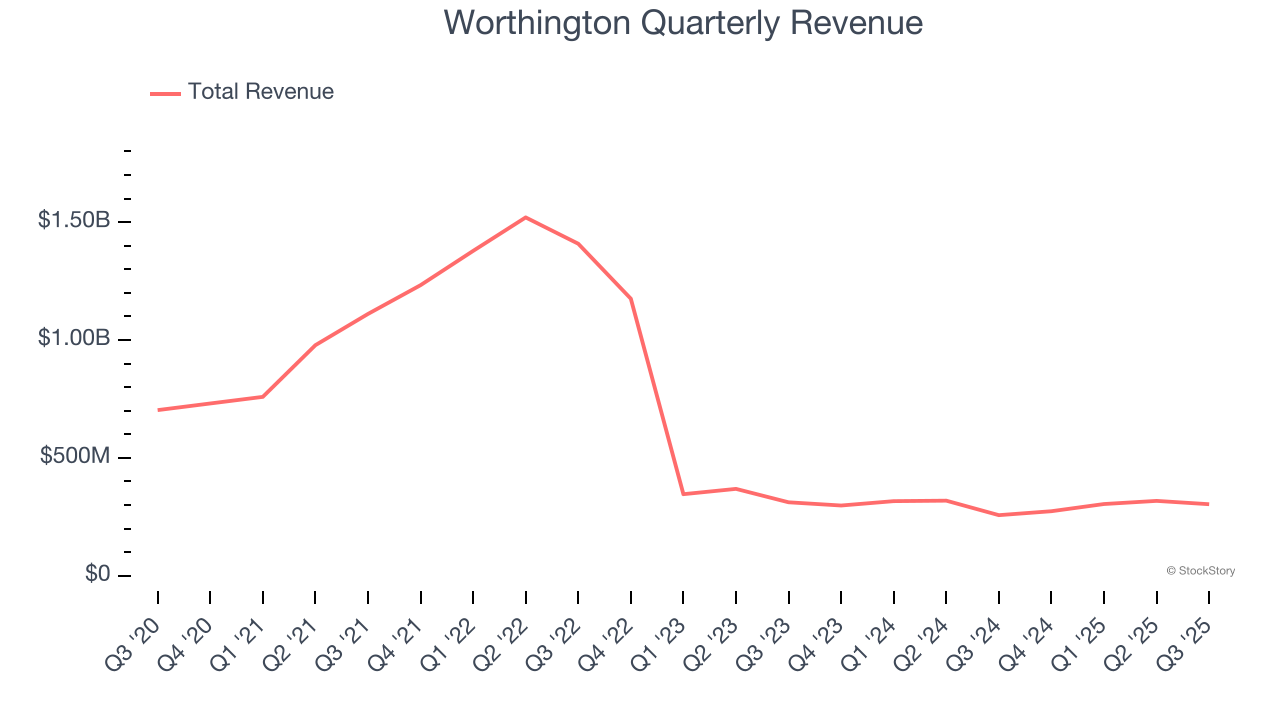
Long-term growth is the most important, but within industrials, a half-decade historical view may miss new industry trends or demand cycles. Worthington’s recent performance shows its demand remained suppressed as its revenue has declined by 26.2% annually over the last two years. 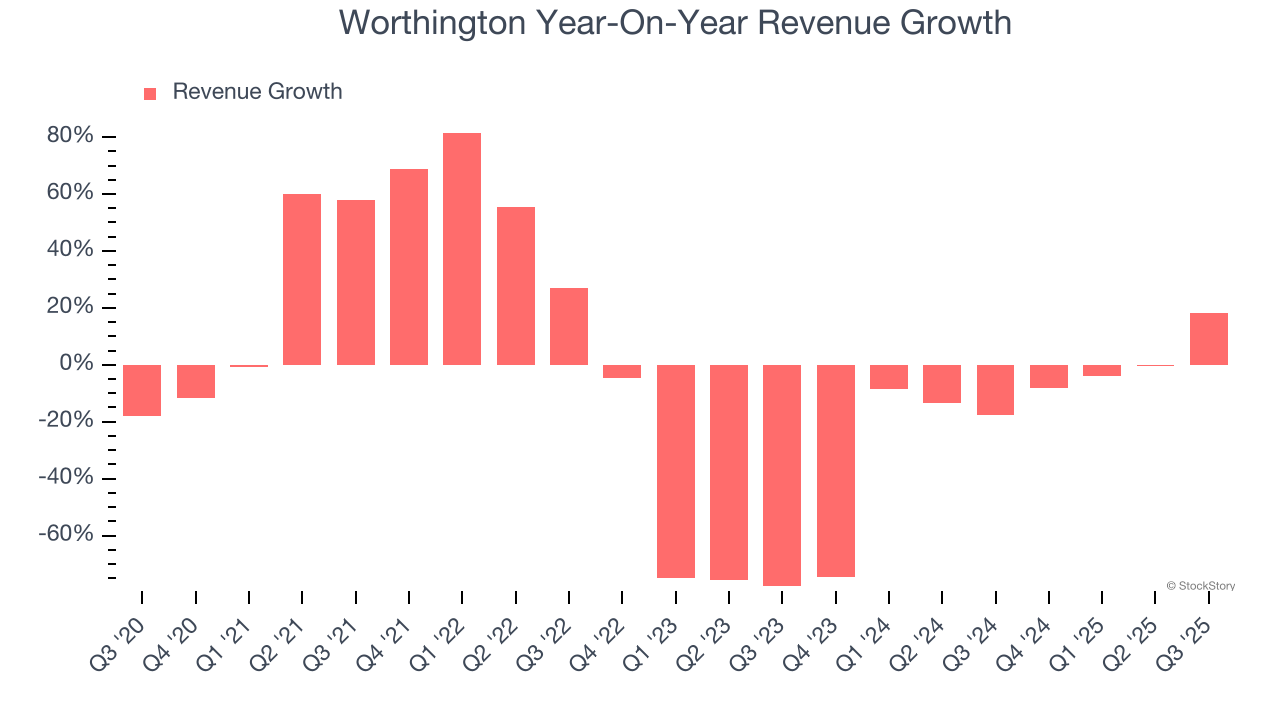
Worthington also breaks out the revenue for its most important segments, Consumer Products and Building Products, which are 39.2% and 60.8% of revenue. Over the last two years, Worthington’s Consumer Products revenue (cylinders, torches, balloon kits, tools) averaged 4% year-on-year declines. On the other hand, its Building Products revenue (refrigerant, cylinders, tanks) averaged 4% growth. 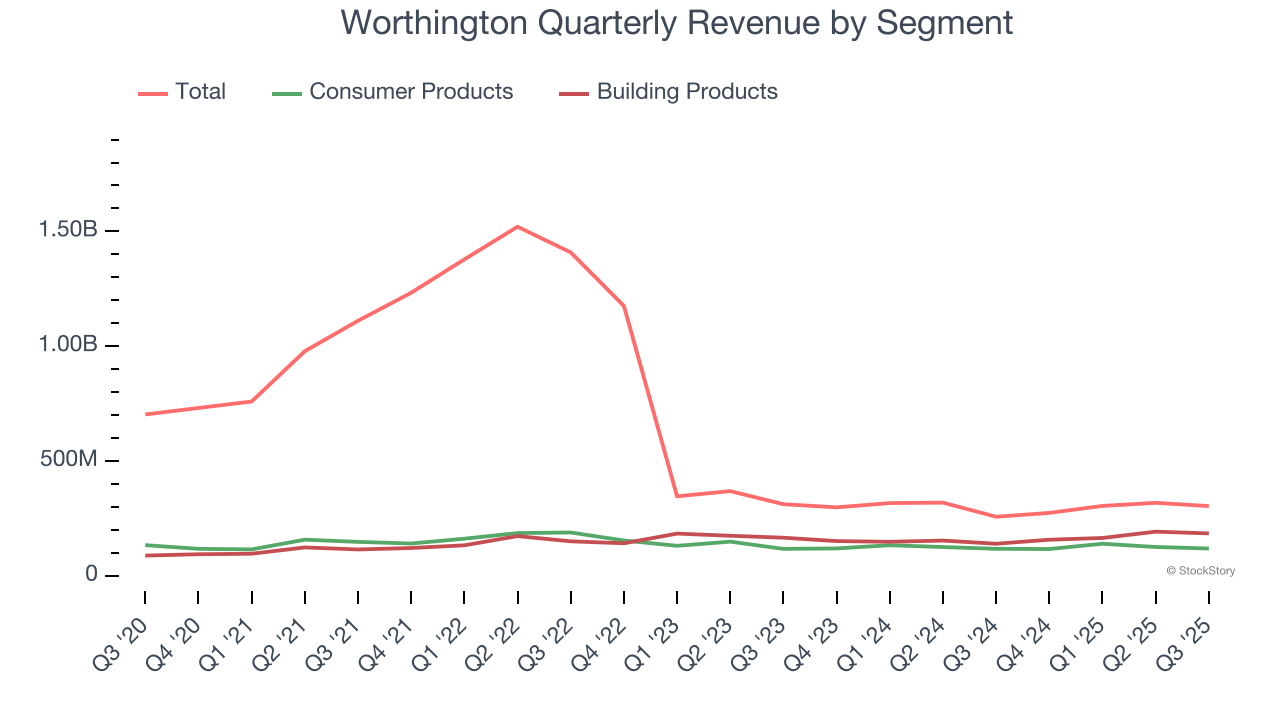
This quarter, Worthington reported year-on-year revenue growth of 18%, and its $303.7 million of revenue exceeded Wall Street’s estimates by 1.4%.
Looking ahead, sell-side analysts expect revenue to grow 10.4% over the next 12 months, an improvement versus the last two years. This projection is noteworthy and indicates its newer products and services will spur better top-line performance.
Software is eating the world and there is virtually no industry left that has been untouched by it. That drives increasing demand for tools helping software developers do their jobs, whether it be monitoring critical cloud infrastructure, integrating audio and video functionality, or ensuring smooth content streaming. Click here to access a free report on our 3 favorite stocks to play this generational megatrend.
Operating Margin
Operating margin is one of the best measures of profitability because it tells us how much money a company takes home after procuring and manufacturing its products, marketing and selling those products, and most importantly, keeping them relevant through research and development.
Worthington was profitable over the last five years but held back by its large cost base. Its average operating margin of 3.9% was weak for an industrials business. This result isn’t too surprising given its low gross margin as a starting point.
Analyzing the trend in its profitability, Worthington’s operating margin decreased by 9 percentage points over the last five years. Worthington’s performance was poor no matter how you look at it - it shows that costs were rising and it couldn’t pass them onto its customers.
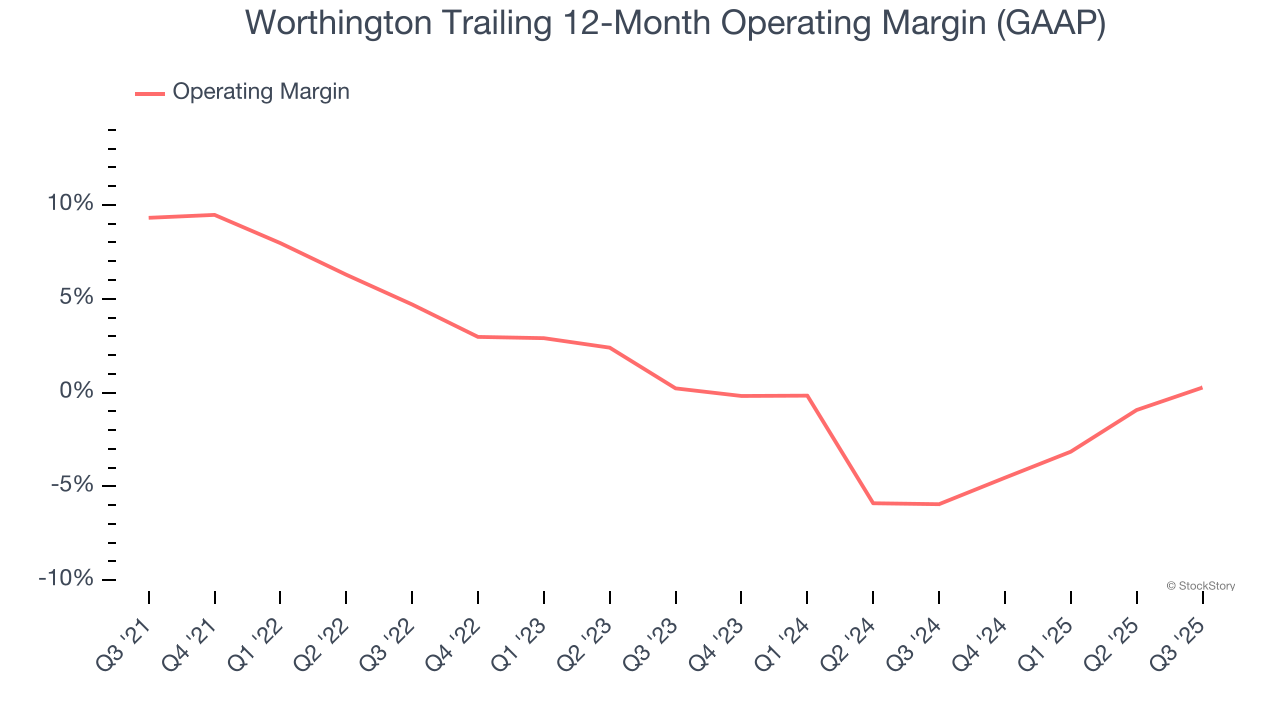
In Q3, Worthington generated an operating margin profit margin of 3%, up 4.9 percentage points year on year. The increase was encouraging, and because its operating margin rose more than its gross margin, we can infer it was more efficient with expenses such as marketing, R&D, and administrative overhead.
Earnings Per Share
Revenue trends explain a company’s historical growth, but the long-term change in earnings per share (EPS) points to the profitability of that growth – for example, a company could inflate its sales through excessive spending on advertising and promotions.
Worthington’s EPS grew at an unimpressive 5.9% compounded annual growth rate over the last five years. On the bright side, this performance was better than its 16.2% annualized revenue declines and tells us management adapted its cost structure in response to a challenging demand environment.
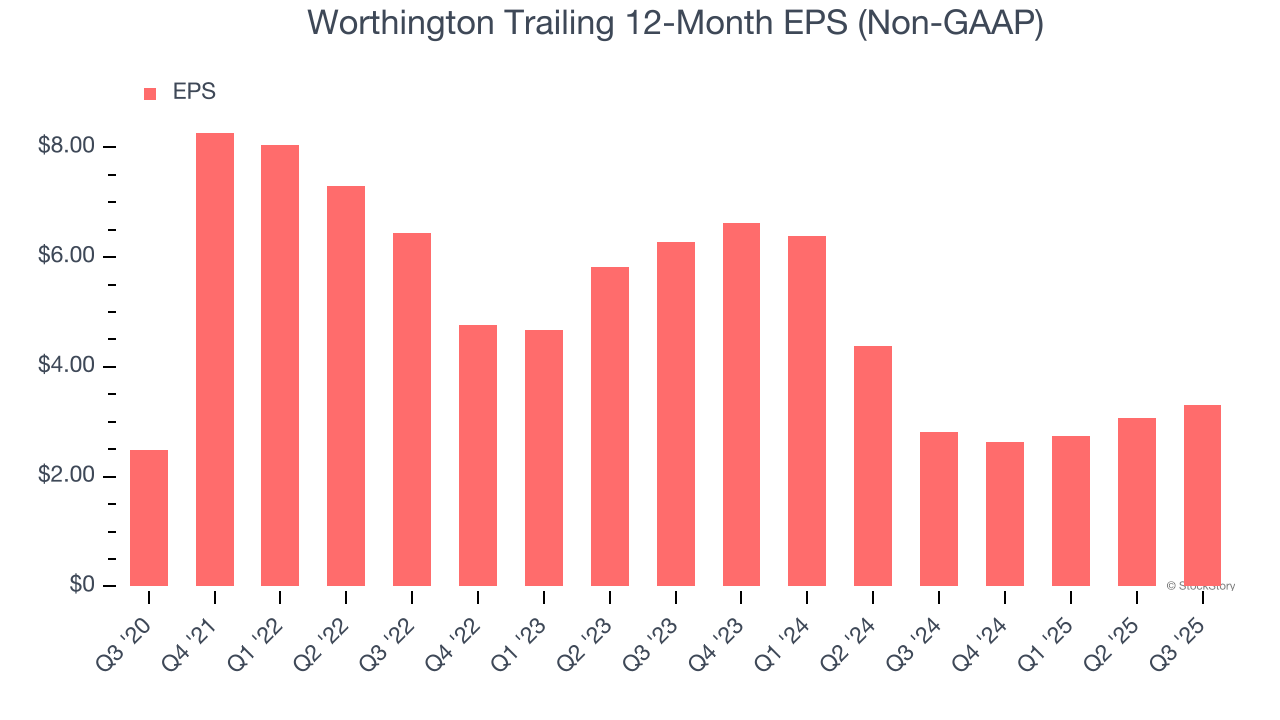
Diving into the nuances of Worthington’s earnings can give us a better understanding of its performance. A five-year view shows that Worthington has repurchased its stock, shrinking its share count by 8.9%. This tells us its EPS outperformed its revenue not because of increased operational efficiency but financial engineering, as buybacks boost per share earnings. 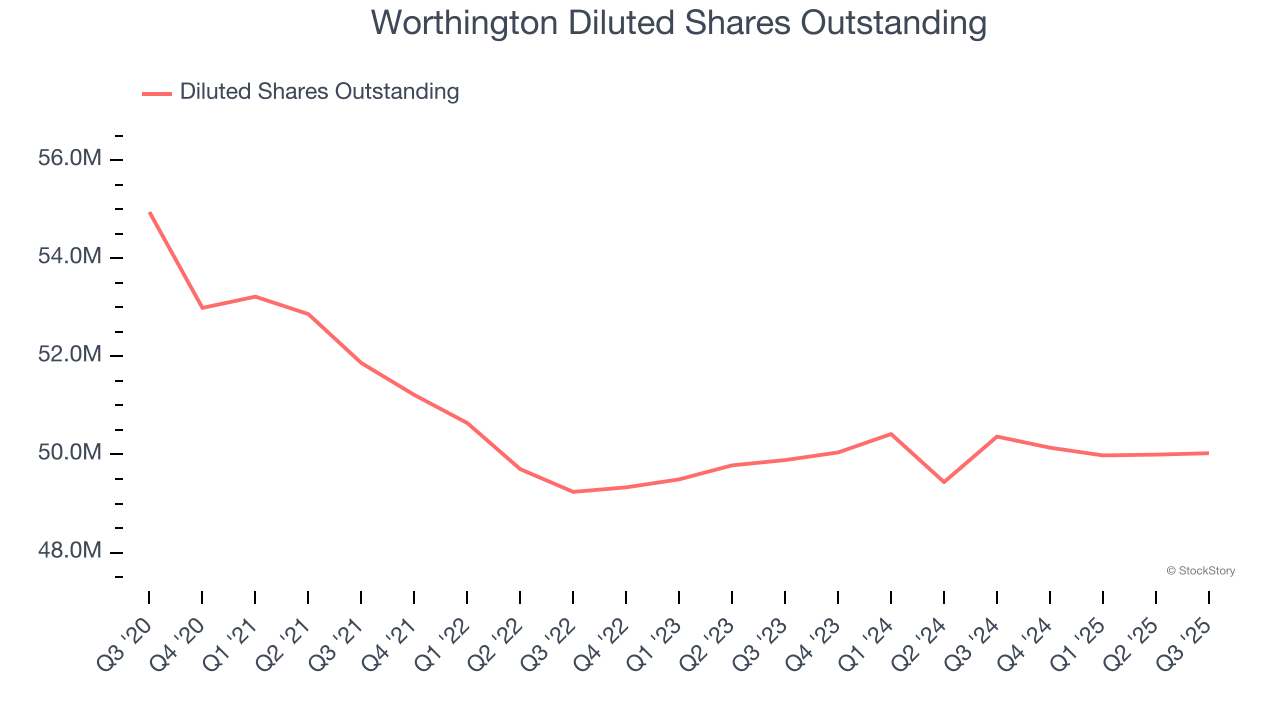
Like with revenue, we analyze EPS over a shorter period to see if we are missing a change in the business.
For Worthington, its two-year annual EPS declines of 27.4% show it’s continued to underperform. These results were bad no matter how you slice the data.
In Q3, Worthington reported adjusted EPS of $0.74, up from $0.50 in the same quarter last year. This print beat analysts’ estimates by 5.4%. We also like to analyze expected EPS growth based on Wall Street analysts’ consensus projections, but there is insufficient data.
Key Takeaways from Worthington’s Q3 Results
We were also glad its EBITDA outperformed Wall Street’s estimates. On the other hand, its . Overall, we think this was a decent quarter with some key metrics above expectations. Investors were likely hoping for more, and shares traded down 2.9% to $58.50 immediately following the results.
Big picture, is Worthington a buy here and now? When making that decision, it’s important to consider its valuation, business qualities, as well as what has happened in the latest quarter. We cover that in our actionable full research report which you can read here, it’s free.
